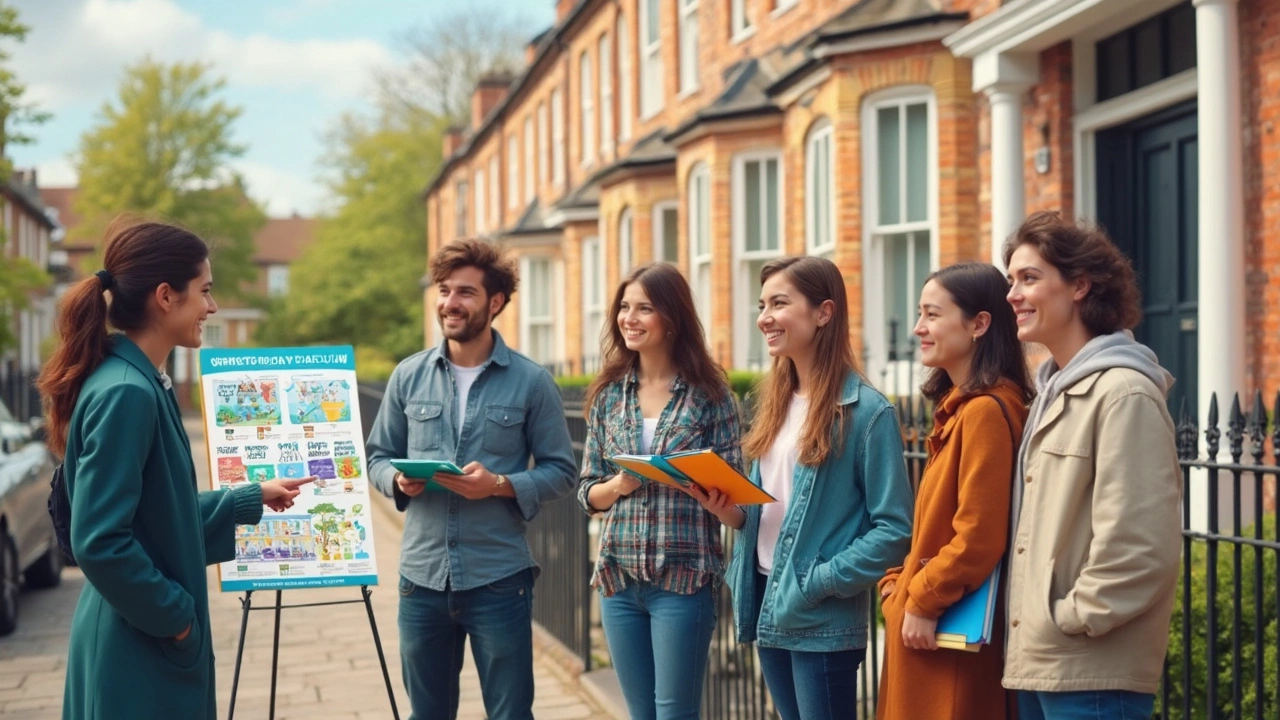Trying to figure out how much house you can actually buy with a $1500 mortgage? It's not as straightforward as plugging in one number. Your monthly payment doesn't just go toward the home price—it's sliced up into the loan, interest, property taxes, homeowners insurance, and sometimes even private mortgage insurance (yep, that's a real thing). So when you see a home price online, you can't just divide it by your monthly budget and call it a day.
If you're aiming for that $1500-per-month sweet spot, you're in good company. This is one of the most common numbers for first-time buyers in the U.S. this year, but what you get for that price can swing a lot depending on where you live, what interest rate you score, and how much cash you put down. For example, with average rates floating around 6.5% in May 2025, a $1500 mortgage usually lands you a home in the $225,000 to $275,000 range if you put 10% to 20% down. Go lower on your down payment, and suddenly you're paying more for mortgage insurance, so the house you can afford gets smaller.
If you're just starting out and don't have a giant down payment, that doesn't mean you're stuck. There are creative ways first-time buyers have stretched their budget—like choosing a place a little farther out, picking a home that needs some updates, or teaming up with a friend or family member on the purchase. Just watch out for the small print and the not-so-obvious costs (HOA fees, closing costs, and those seasonal tax hikes your lender never warns you about).
- The $1500 Mortgage Math — What Are You Really Paying For?
- How Much House Fits Under $1500? Real Examples
- Ways to Boost What You Can Afford
- Sneaky Costs Beyond Your Mortgage
- Smart Money Moves for First-Time Buyers
The $1500 Mortgage Math — What Are You Really Paying For?
So, if you're planning for a $1500 mortgage, you need to know where that money actually goes each month. Spoiler: it’s not all buying your house. Your monthly payment usually breaks down into four main parts, known as PITI: Principal, Interest, Taxes, and Insurance. Sometimes, you’ll have private mortgage insurance (PMI) or HOA fees added in too.
Here’s how a typical payment might look in 2025 for an average-priced home in the Midwest or South:
| Monthly Cost | Typical Amount |
|---|---|
| Principal & Interest | $1,150 |
| Property Taxes | $200 |
| Homeowners Insurance | $100 |
| PMI (if down payment < 20%) | $50 |
| 1500 mortgage total | $1,500 |
Keep in mind these numbers can vary a lot by state—even by neighborhood. Property taxes can jump from $80 in some Texas suburbs to $500+ in New Jersey. Insurance might be higher if you’re in a hurricane or wildfire area.
PMI (private mortgage insurance) kicks in if you put down less than 20%. It sounds annoying, but it lets first-time buyers get in the door with less upfront cash. That $50 can add up, though—sometimes more depending on the loan and credit score.
Also, don’t forget about HOA fees. Not every home has them, but condos or planned communities often do. That $1500 target has to include these if they apply. Some HOAs can cost as much as $300 or more per month, and that's on top of your regular payment. So, always ask before you fall in love with a place.
- Principal pays down your loan, so that’s your equity.
- Interest is what you pay the bank for borrowing their money.
- Property taxes fund local stuff like schools and fire departments.
- Insurance protects against things like fire, hail, or someone getting hurt on your property.
- PMI protects the lender if you default, required with less than 20% down.
If you want a rough estimate, for every $10,000 in price difference, your mortgage payment changes about $65 per month at a 6.5% interest rate, not counting taxes or insurance. Always double-check with a local lender or use an online mortgage calculator to get a precise answer for your budget and area.
How Much House Fits Under $1500? Real Examples
So, you want to know what kind of house you can get with a $1500 mortgage payment? There’s no magic number that fits everyone, but it gets way easier when you look at real numbers. Here’s what you’re up against in May 2025: interest rates are hanging out near 6.5% for a 30-year fixed loan, and the average property tax bill in the U.S. is around 1.1% of home value per year. Toss in homeowners insurance, and you’ve got all the main ingredients.
Let’s see what this really looks like. If you put 10% down on a home (pretty standard for first-time buyers), your budget could grab you something in the $240,000–$255,000 zone. Got 20% down? You might inch up to $280,000 or so and skip private mortgage insurance (PMI), which keeps your monthly bill closer to that $1500 target.
Here’s a quick breakdown comparing different down payments and home prices for a 1500 mortgage (assuming a 6.5% interest rate and plugging in taxes and insurance):
| Home Price | Down Payment | Loan Amount | Monthly Payment (PITI) | PMI Needed? |
|---|---|---|---|---|
| $250,000 | 10% ($25,000) | $225,000 | $1,492 | Yes |
| $265,000 | 15% ($39,750) | $225,250 | $1,498 | No |
| $280,000 | 20% ($56,000) | $224,000 | $1,487 | No |
Notice how putting more down lets you boost your home price a bit without raising your payment. Also, dropping below 20% down means PMI gets tacked on, usually from $40 to $130 a month depending on your credit score. In some markets (think parts of the Midwest or South), you might stretch your $1500 further. In hot markets like Boston, Denver, or LA? That budget might snag a condo or small townhouse, but likely not a detached home.
And don’t forget, your numbers can shift fast depending on property tax rates where you’re buying. Texas buyers, for example, might pay twice the national average tax rate, which can squeeze your budget even with a lower-priced home.
Key takeaway: figure out your down payment, don’t forget property taxes and insurance, and use a good mortgage calculator that includes everything—not just the principal and interest. This will help keep that monthly payment under control and make sure you’re shopping for homes you can actually afford.

Ways to Boost What You Can Afford
If that $1500 mortgage cap has you worried you’ll never get enough house, don’t stress. There are some clever moves you can make right now that actually make a difference. Whether it’s adjusting your loan type, increasing your down payment bit by bit, or getting help from special programs, small steps often lead to better deals. Here’s how first-timers like you are making the most of their monthly budgets in 2025.
- Up your down payment. Even a jump from 3% to 5% shrinks your loan and cuts mortgage insurance. If you put 20% down, you avoid PMI altogether. People who save a little longer or snag a gift from family get way more flexibility.
- Shop lenders and compare rates. Did you know a difference of just 0.5% in your interest rate can mean $100 or more every month? Don’t settle for the first offer. Run your numbers with at least three lenders, including local credit unions who sometimes beat the big guys.
- Look for first-time buyer programs. In 2025, a ton of state and local grants still exist—some cover part of your down payment or even help with closing costs. FHA and USDA loans are still popular with buyers who don’t have huge savings.
- Choose a longer loan term. A 30-year loan keeps monthly payments lower, but you’ll pay more interest over time. Still, if your priority is buying now with a steady payment, it’s worth considering.
- Reduce other debts before applying. Lenders look at your debt-to-income ratio like it’s the holy grail. Pay down credit cards and car loans first—this frees up more of your monthly income for your 1500 mortgage.
Check out this quick comparison of what a $1500 payment can get you based on down payment and rates (estimated for May 2025):
| Down Payment | Interest Rate | Home Price Range |
|---|---|---|
| 3% ($7,500 on $250k) | 6.5% | $210,000 - $230,000 |
| 10% ($25,000 on $250k) | 6.5% | $235,000 - $260,000 |
| 20% ($50,000 on $250k) | 6.5% | $260,000 - $290,000 |
| 10% ($25,000) | 5.75% | $250,000 - $275,000 |
Most folks are surprised how much difference a tiny shift in the down payment or rate makes. So keep your eyes peeled for deals, grants, and better offers—the right combo can boost your home buying power way more than you might think.
Sneaky Costs Beyond Your Mortgage
Here’s the thing nobody tells you when you start house hunting: your monthly payment isn't just about the loan. There are all sorts of hidden and not-so-hidden charges that can sneak up on first-time buyers and throw off your budget.
First up, property taxes. These vary a ton depending on where you live. Some counties in Texas and New Jersey can charge over 2% of your home’s value every year. On a $250,000 house, that could be more than $400 a month—just for taxes!
If your down payment is less than 20%, you’ll probably get hit with private mortgage insurance (PMI). This usually adds $100-$250 every month, depending on your loan and credit score. Plenty of buyers forget about this until they see their first bill.
Then there’s homeowners insurance. This protects your place from disasters, but it’s not always cheap. According to the National Association of Insurance Commissioners, the average home insurance premium in the U.S. is now about $1,428 per year—that’s roughly $119 a month. If your area has lots of storms, wildfires, or theft issues, expect to pay more.
Home affordability isn’t just about what you pay the bank—it’s all these extras bundled together.
"First-time buyers are often surprised by closing costs and recurring fees. Being aware of these upfront can avoid a lot of stress down the road." – Consumer Financial Protection Bureau
Don’t forget about Homeowners Association (HOA) fees. Suburbs, condos, and new neighborhoods love their HOAs, and these monthly fees can range from $50 to $400 or even higher, depending on amenities and location. And they’re non-negotiable if you buy in the neighborhood.
Other costs to keep on your radar:
- Utilities: Water, electricity, trash, and internet can add up. Newer homes might be more efficient, but older places can surprise you with big bills, especially in extreme weather.
- Maintenance: Leaky roofs, busted water heaters, the grass that won’t mow itself… stuff breaks, and it’s not your landlord’s problem anymore. Set aside 1% of your home’s value each year for repairs. On a $250,000 place, that’s $2,500 a year, just in case.
- Closing costs: Lenders, title companies, inspectors—everyone gets a piece. These can run 2%-5% of the purchase price, so for $250,000, you might pay $5,000 to $12,500 upfront, on top of your down payment.
| Expense | Typical Monthly Amount | Notes |
|---|---|---|
| Property Taxes | $200-$450 | Varies by state/city |
| Homeowners Insurance | $100-$150 | Higher in hazard-prone areas |
| PMI | $100-$250 | If you put less than 20% down |
| HOA Fees | $50-$400+ | Not everywhere, but common |
| Maintenance Fund | $208 | (1% of $250,000/12 months) |
Add these up and it’s easy to see why your total monthly cost can jump way past your base mortgage. Do the math before you fall for a place, and you’ll be a lot less stressed when the real bills arrive.

Smart Money Moves for First-Time Buyers
If you’re buying your first place, your best moves can make or break your wallet both now and years ahead. It’s not about being a finance whiz—it’s about using some proven tricks and knowing what really matters in the process.
Start by getting yourself pre-approved, not just pre-qualified. Pre-approval gives you a real number from a lender based on your finances and credit, so you know what your 1500 mortgage can buy. Sellers love buyers who come pre-approved—it shows you mean business.
Next, keep an eye on your credit score. Even a small shift can mean big savings. Based on Mortgage Bankers Association data from early 2025, buyers with scores over 740 still lock in rates up to 0.75% lower than those with scores in the 600s, cutting thousands off your total interest. If you’re hovering near a key cutoff, paying down credit cards or disputing errors before applying can really pay off.
- Shop around with at least three lenders. Don’t just take the bank your parents use. Lenders might quote totally different rates and fees.
- Look into state or local first-time buyer programs. Many offer down payment help or lower-rate mortgages for newbies. In 2025, the average grant for first-timers is about $7,800. That can totally cover closing costs or drop your loan balance.
- Don’t blow your savings on the down payment—keep an emergency fund for repairs or job hiccups. Three months’ expenses is a solid minimum.
- Ask about locking your rate when it’s low. Rate jumps are common, and locking even a quarter-point lower can save you about $35 a month for a 30-year loan.
Here’s how rate changes can hit your monthly payment, just so you see the real numbers:
| Loan Amount | Interest Rate | Monthly Payment (Principal & Interest) |
|---|---|---|
| $250,000 | 6.5% | $1,580 |
| $250,000 | 6.0% | $1,498 |
| $250,000 | 5.5% | $1,419 |
The lower your rate, the more wiggle room you get without blowing past your $1500 target. And if your first home isn’t perfect, that’s okay—think of it as a stepping stone. Focus on neighborhoods where prices tend to go up, even slowly, so you build up equity for your next move.
